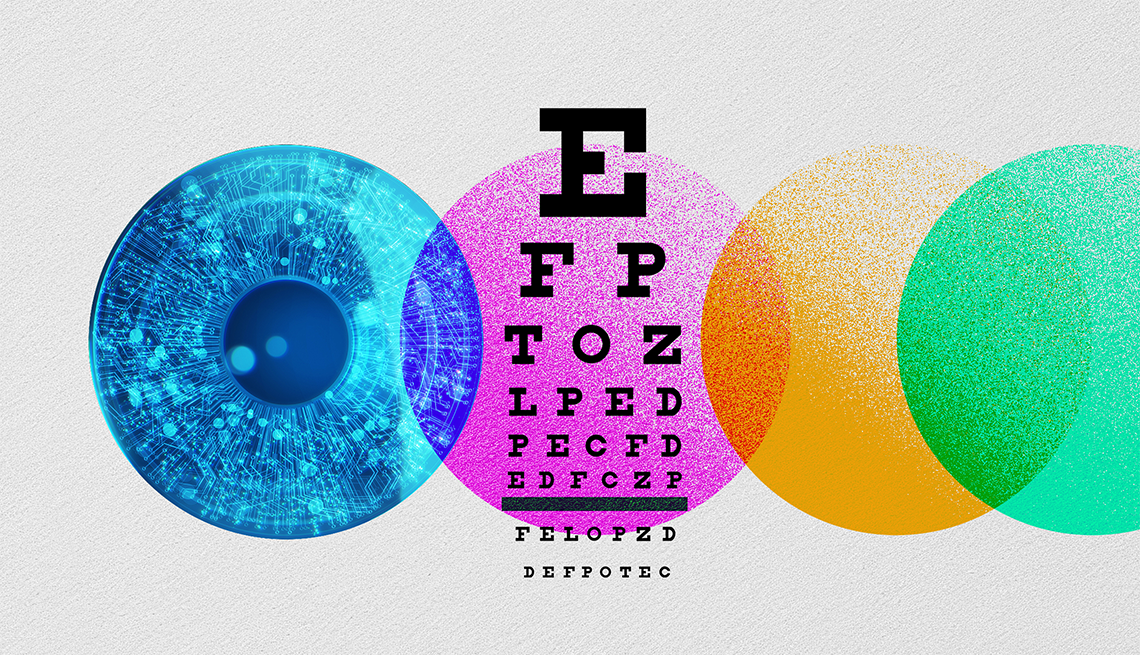
- Select a language for the TTS:
- UK English Female
- UK English Male
- US English Female
- US English Male
- Australian Female
- Australian Male
- Language selected: (auto detect) - EN
Play all audios:
6. EYE PRESSURE TEST (TONOMETRY) Tonometry, otherwise known as eye pressure testing, measures your intraocular eye pressure (IOP). The test could include a quick puff of air onto the
eyeball or the application of a pressure-sensitive tip near your eye. Eye numbing drops may be used. Having elevated IOP could be a sign of glaucoma. 7. SLIT- LAMP EXAM (FRONT OF THE EYE
EXAM) A slit-lamp microscope is used to light up the front portions of your eye, which include your eyelid, cornea, iris and lens. This test can help to diagnose cataracts and identify
injuries to the cornea, among other conditions. 8. DILATED PUPIL EXAM (RETINA AND OPTIC NERVE TEST) Your doctor may put dilating eye drops into your eye to widen your pupil during an eye
exam. Shutterstock During your visit, the eye doctor will likely put dilating eye drops into your eye to widen your pupil, which is the black dot in the middle of your eye. This allows the
doctor to examine your optic nerve and your retina, which is a light-sensitive layer of tissue at the back of your eyeball that converts images into electric signals and sends them to your
brain through the optic nerve. “In addition to an exam, your eye doctor may leverage new technology such as optical coherence tomography (OCT) to objectively analyze the different layers of
the retina and optic nerve,” says Boparai. This test can cost extra, approximately $45 in some cases, and is often not covered by insurance. “Your eye doctor may also use visual field
testing to evaluate your peripheral and central vision. If you have a condition that requires photo documentation, your eye doctor may obtain images of the front of the eye or of the back of
the eye using specialized cameras. If you have a corneal condition, your eye doctor may use corneal topography to evaluate the unique shape of your corneas,” Boparai says. Read more about
10 Diseases Eye Dilation Can Spot. 9. BRAIN AND COGNITIVE TESTING Eye symptoms can sometimes be an indicator of cognitive issues, according to the Cleveland Clinic. In certain circumstances,
your doctor may do a cognitive assessment by making conversation with you to make sure that you know details about yourself and your environment. Additional eye tests include specialized
imaging techniques that help to provide early detection of problems in the back of the eye, as well as on its surface and inside the eye. VIDEO: These Meals Help Keep Your Eyes Healthy HOW
MUCH IS AN EYE EXAM? Expect to pay between $50 to $200 for a comprehensive eye exam without insurance. If you are using insurance, your copay may range between $10 and $40. Medicaredoesn’t
cover eye exams, glasses or contact lenses unless you have certain conditions like diabetes, age-related macular degeneration, or are at high risk for glaucoma. If you want to do the eye
chart test at home, you can buy one online for $20. WHAT HAPPENS AFTER THE EYE EXAM? If your eye care professional finds that you need corrective lenses, they will provide a digital or
paper copy of the prescription. The prescription could also include your pupillary distance, which is the distance between the pupils of your eyes. You need that number to buy glasses
online. You may have to ask for the pupil measurement, as it’s not always routinely provided. Your doctor may also provide recommendations for treatment and follow-up testing for other eye
conditions they detect. If your pupils are dilated during the exam, you may be sensitive to daylight and device screens for a few hours and could have trouble focusing on items close to
your face. You may want to wear sunglasses or temporary shades immediately after the visit. Arranging transportation is a good idea if you are concerned about driving after eye dilation.
WARNING SIGNS OF EYE PROBLEMS Anytime you notice changes in your vision, it is a good idea to visit an eye specialist. These changes can include: * Decreased vision, such as finding it
harder to read fine print or text * Fading of color vision * Squinting or eyestrain * Headaches at the end of the day * Eye pain or prolonged itching * Drainage or redness of the eye *
Double vision * Floaters (tiny specks that appear to float before your eyes) * Circles (halos) around light sources * Flashes of light WHEN VISION LOSS IS AN EMERGENCY According to the
Cleveland Clinic, unexpected or sudden vision loss in one or both eyes (partial or total) is a medical emergency. In some situations, the vision loss can become permanent, and in others,
the underlying condition causing the sudden vision loss can be deadly. Sudden vision loss can look like the following: * Blurring or fading * Darkening/dimming * A black curtain or sheet
covering part or all of your vision in one or both eyes * Bright flashes or lights that cover part or all of your vision Call 911 if you experience these sudden vision loss symptoms.
Migraines can also cause temporary vision loss. It’s important to talk to your eye care specialist or health care provider to see if you need emergency care in that scenario, according to
the Cleveland Clinic. CAN I CHECK MY EYESIGHT MYSELF AT HOME? A home vision test is not a substitute for an exam by a professional eye care provider and will not diagnose any underlying
health conditions you may be facing. However, it can be a first step in learning more about your eye health. The AAO offers what’s known as a Snellen chart for adults along with instructions
on setting up the test and determining the results. Other possible home tests include the Amsler grid test for macular degeneration. This can be used to check if lines on the grid look
wavy or distorted, or if any of the areas of the grid appear to be missing. The American Macular Degeneration Foundation provides a printable grid with instructions. Smartphone apps are
available that offer vision tests and even provide prescriptions, but they may require attaching an additional device to your phone. Your eye care provider may be able to offer more
information on their accuracy. WHAT DOES YOUR EYE COLOR SAY ABOUT YOUR HEALTH? Your eye color may signal a predisposition to certain medical conditions, such as skin or eye cancer.
Additionally, some diseases, medications and traumas can make your eyes seem to change color. These changes can happen in the iris, which is the colored part of the eye, or in another part
of your eye that makes the eye color appear to change. Read more about eye color and your health and take our eye color quiz.
![[withdrawn] client money and accounts for immigration advisers](https://www.gov.uk/assets/static/govuk-opengraph-image-03837e1cec82f217cf32514635a13c879b8c400ae3b1c207c5744411658c7635.png)






